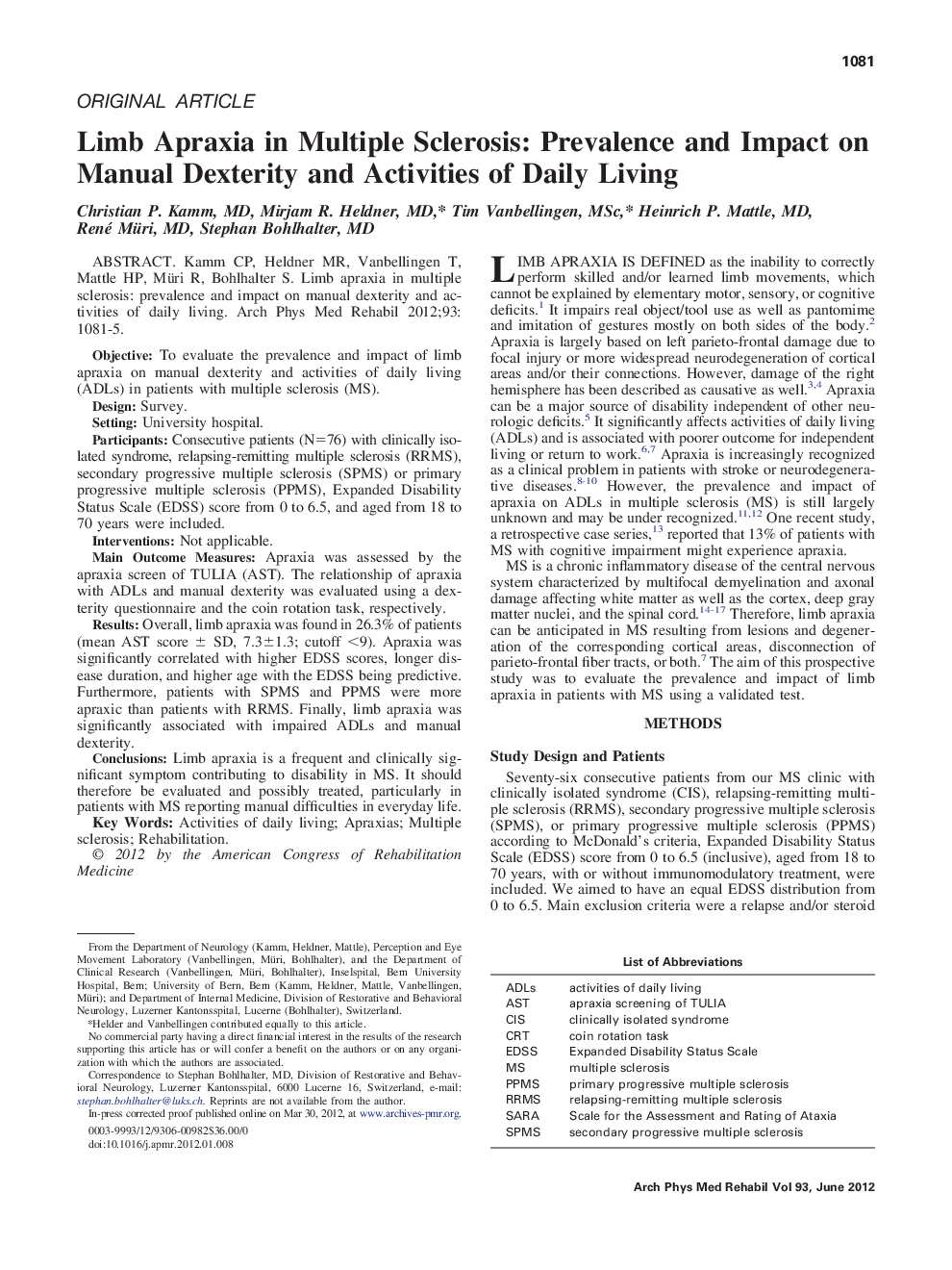| Article ID | Journal | Published Year | Pages | File Type |
|---|---|---|---|---|
| 3450005 | Archives of Physical Medicine and Rehabilitation | 2012 | 5 Pages |
Kamm CP, Heldner MR, Vanbellingen T, Mattle HP, Müri R, Bohlhalter S. Limb apraxia in multiple sclerosis: prevalence and impact on manual dexterity and activities of daily living.ObjectiveTo evaluate the prevalence and impact of limb apraxia on manual dexterity and activities of daily living (ADLs) in patients with multiple sclerosis (MS).DesignSurvey.SettingUniversity hospital.ParticipantsConsecutive patients (N=76) with clinically isolated syndrome, relapsing-remitting multiple sclerosis (RRMS), secondary progressive multiple sclerosis (SPMS) or primary progressive multiple sclerosis (PPMS), Expanded Disability Status Scale (EDSS) score from 0 to 6.5, and aged from 18 to 70 years were included.InterventionsNot applicable.Main Outcome MeasuresApraxia was assessed by the apraxia screen of TULIA (AST). The relationship of apraxia with ADLs and manual dexterity was evaluated using a dexterity questionnaire and the coin rotation task, respectively.ResultsOverall, limb apraxia was found in 26.3% of patients (mean AST score ± SD, 7.3±1.3; cutoff <9). Apraxia was significantly correlated with higher EDSS scores, longer disease duration, and higher age with the EDSS being predictive. Furthermore, patients with SPMS and PPMS were more apraxic than patients with RRMS. Finally, limb apraxia was significantly associated with impaired ADLs and manual dexterity.ConclusionsLimb apraxia is a frequent and clinically significant symptom contributing to disability in MS. It should therefore be evaluated and possibly treated, particularly in patients with MS reporting manual difficulties in everyday life.
